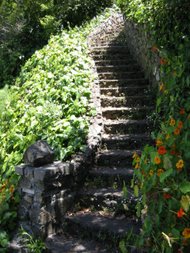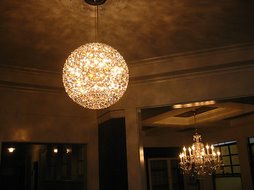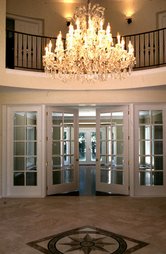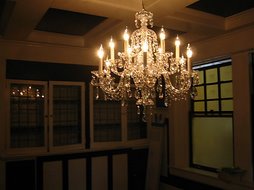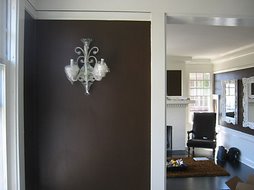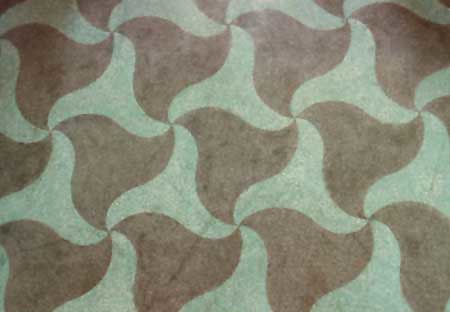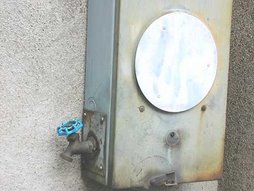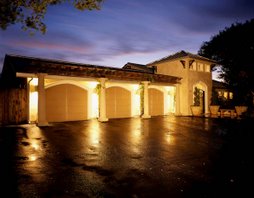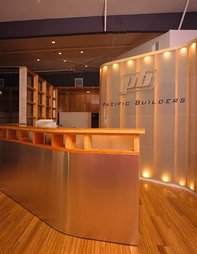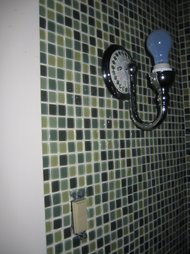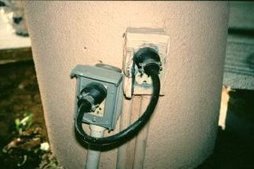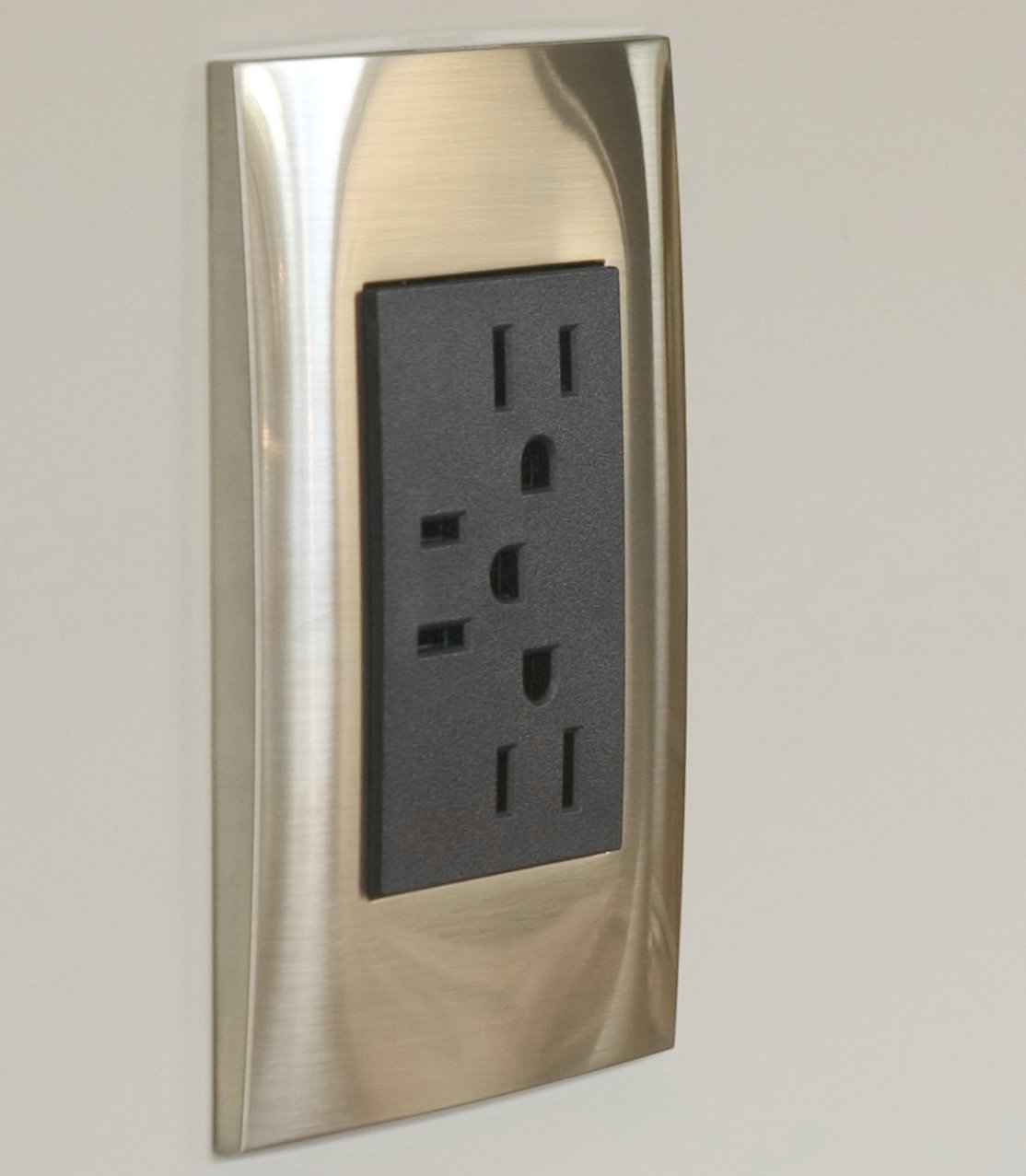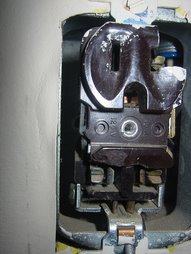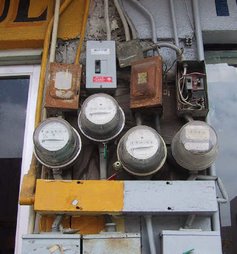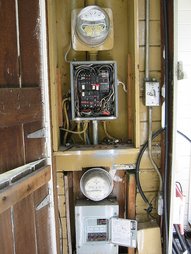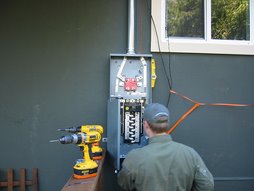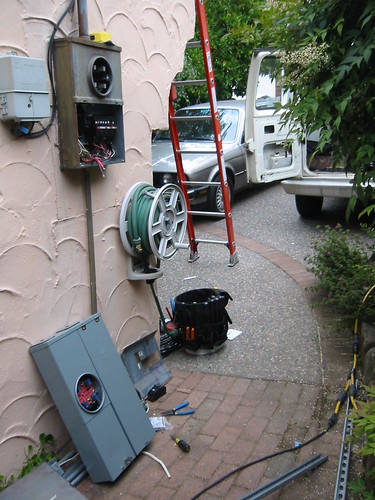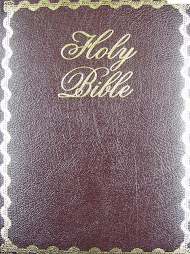https://www.dli.mn.gov/ccld/PDF/eli_GFCI_history.pdf
Before 1950
30-amp fuse panel was the norm. These fuse panels featured two plug fuses to protect the branch circuits and a knife-blade switch to disconnect power. The fuses were installed in a ceramic fuse holder, which was mounted within a black metal enclosure. This 30-amp service panel supplied 120 volts to a home, unlike the 240 volts today's service panels do. These panels are no longer sufficient and must be updated to at least a 100-amp circuit breaker panel to satisfy both FHA and other lending institution requirements for home sales.
1950 - 1965
The 60-amp service panel became widely accepted and preferred. This panel was mounted inside a gray metal cabinet and featured a 240-volt feed. It had two cartridge fuse blocks and four plug fuse blocks.
The first cartridge fuse block was used as the main disconnect and held 60-amp fuses. The other was used as an appliance feed and held 30-amp fuse. It fed power to things like electric dryers, water heaters, ovens, or electric ranges.
The four plug fuses allowed for four individual branch circuits. In smaller homes with little electrical needs, this was often sufficient to power the home. These panels did have their limitations also though, as they could not support more than one 240-volt feed or more than the four individual branch circuits. It did, however, offer a panel schedule index that was placed inside the door of the panel so that the circuits could be labeled as to where they fed within the home.
The 60-amp service panel became widely accepted and preferred. This panel was mounted inside a gray metal cabinet and featured a 240-volt feed. It had two cartridge fuse blocks and four plug fuse blocks.
The first cartridge fuse block was used as the main disconnect and held 60-amp fuses. The other was used as an appliance feed and held 30-amp fuse. It fed power to things like electric dryers, water heaters, ovens, or electric ranges.
The four plug fuses allowed for four individual branch circuits. In smaller homes with little electrical needs, this was often sufficient to power the home. These panels did have their limitations also though, as they could not support more than one 240-volt feed or more than the four individual branch circuits. It did, however, offer a panel schedule index that was placed inside the door of the panel so that the circuits could be labeled as to where they fed within the home.
1965 - present
Circuit breaker panel invented, provides expandable circuit space and 240-volt, 100- and 200-amp service. This panel features a main breaker and two rows of circuit breakers that are used for branch circuits. This panel allows power to outlets, lighting, and subpanels. Circuit breakers are reset-able devices, unlike fuses that have to be changed when they blow.
Circuit breaker panel invented, provides expandable circuit space and 240-volt, 100- and 200-amp service. This panel features a main breaker and two rows of circuit breakers that are used for branch circuits. This panel allows power to outlets, lighting, and subpanels. Circuit breakers are reset-able devices, unlike fuses that have to be changed when they blow.
http://ecmweb.com/content/1900s-1901-1909
http://ecmweb.com/content/1910s-1910-1919
http://ecmweb.com/content/1930s-1930-1939
http://ecmweb.com/content/1940s-1940-1949
http://ecmweb.com/content/1950s-1950-1959
http://ecmweb.com/content/1960s-1960-1969
http://ecmweb.com/content/1970s-1970-1979
http://ecmweb.com/content/1980s-1980-1989
http://ecmweb.com/content/1990s-1991-1999





